No products in the cart.
Who needs technology in the classroom?
To go tech or not to go tech? In a world being taken over by technology that morphs by the minute, the question many modern classrooms face is not if, but how to use technology in the classroom. In this article Shahrezad Samiuddin explores the benefits and challenges of adding technology to the educational mix.
I’ll start with a confession. This article was supposed to be two articles instead of one, with one in support of incorporating technology and the other for shunning technology completely from the classroom. But the more we look around us and the more we look at students and their lives, it becomes difficult to deny the impact modern technology is having on all our lives. That’s when it dawned on me: Can we in this day and age actually write an article shunning technology in the classroom? Writing one would have been an exercise in futility against the growing tsunami (used here in only the most positive sense!) of technology that has made all our lives so much easier and put up a few new challenges in our path. And at the end of it all uploading this piece onto the Internet and sending out emails with links to it, would be completely ironic.
Just to help you appreciate technology a little more, remember how helpless one felt when mobile phone services were suspended for a day, due to the unstable law and order situation recently? Those of us who were computer and Internet savy continued to stay connected and function to some extent. And some of those who even had access to a landline couldn’t bring themselves to ‘walk’ to the phone, because they were too used to talking on their phones while doing other things. So when you use your cell phone or type out something on a PC or laptop, it is important to remind ourselves and appreciate all that technology is enabling us to do. We are accomplishing many tasks simultaneously (breezing through them rather) that we had not thought possible a couple of decades ago. It feels like we are doing the work of five people thanks to technology … which of course raises other issues, but that is another story for another day.
Both big and small businesses and now even many homes cannot function without technology. So if technology has such a grasp on the world’s businesses, is it any surprise that the logical next step is to incorporate more and more of it into our schools, as is already being done in several developed countries?
Saying ‘yes’ to technology
And that brings us to probably one of the biggest benefits of using technology at the school-level. The access to information that comes from unlimited Internet is a boon for students in this day and age. Remember the days when we had to pore over volumes of encyclopaedias in school or public libraries (or if you were lucky, your family owned a set) to get to a piece of information? Sounds prehistoric, doesn’t it? Those were the lazy years, when you could plan your day at leisure, take out the time and make your way to a library before setting about locating the relevant book. You then waded through pages and pages of material, copying down what was required (or breaking copyright laws and the bank to do all that photocopying), all the while thinking there had to be an easier way.
Fast-forward to the present moment and as you type in your search word into Google, do you ever feel overwhelmed and intimidated by the act of research? Although as an aside, you will more likely be intimidated and overwhelmed by the amount of information that the Internet throws up.
Also the ease with which the student or teacher can use technology to look up information and gain access to extensive sources of information means that students stay engaged and interested in projects far longer than they would have otherwise. Remember it is active learning after all.
In fact, technology makes self-learning much easier for both students and teacher. In such a scenario the computer acts almost as a teacher, while the teacher adopts the role of a facilitator and guide who sends you in the right direction.
Technology also allows students and teachers to present what they have learned, and what needs to be learnt in convenient and creative ways. The most obvious example is the ease with which students can put together a PowerPoint presentation and the effortlessness with which they can prepare their assignments using desktop publishing software. In fact with the use of technology, preparing assignments and lessons using programmes can be downright fun.
The stumbling blocks
But before all this makes technology sound like the answer to students’ (and teachers’) prayers, let’s dwell on the downside that all those gadgets and programmes bring along with all the glamour; the stuff that prevents the verdict on technology from being straightforward and obvious.
Everything new brings its own set of challenges and technology is no different. For where computers provide access to that infinite-legged monster called the Internet, they also provide students and teachers with an immense potential for distraction. As anyone who works on a PC or a laptop with access to the Internet will tell you, the temptation to take a break and check out that cool link or god forbid, Facebook, after every paragraph of your assignment is done, can stall many a constructive project. Is it any surprise that many offices block access to certain websites, especially web streaming and social networks? So technology brings with it the tendency to ‘wander off’ with it and the need to cultivate discipline (of Herculean proportions, might we add) to ‘stop’ oneself.
Also access to a Pandora’s box of information, whether you are a student or teacher doesn’t automatically mean that all is taken care of when it comes to gathering your facts. Often finding the right material to integrate into a lesson or an assignment is not easy. In fact, using your own creativity or common sense can be much easier and timesaving than running after the red herrings that lie in the path of any Internet-based research. Teachers often end up spending way too much time looking for relevant bits of information, when they could have just brainstormed a little bit.
It’s how you do it
So the success of any form of technology that is being used in schools depends on how it’s used. Before schools take on technology (which almost never comes cheap – and that folks is another drawback and a topic for another article) and train their teachers to use it, it is important to ask how that particular programme or gadget is likely to further a child’s thinking skills and his or her ability to evaluate and analyse information and ideas. This is important so that the expensive little gadget or programme doesn’t become a taken-for-granted plaything that is only cherished for its newness.
In a scenario where a school acquires a new technology in a classroom, teachers should be trained to use it efficiently and also to act more as facilitators for the student.
New challenges
The changing face of technology means that teachers need to be read up more on their subjects as students’ access to information means that ‘unplanned’ queries can crop up in the classroom. The last thing most conscientious teachers want is to seem unaware or ignorant. In fact in some developed countries, educational institutions have discovered that one of the reasons that some teachers were reluctant to use (and also discouraged their students from using) technology in the classroom was because they wanted to try and ‘contain’ their well-planned lesson plans.
Despite these challenges, incorporating technology into education has many benefits. Software that teaches subjects through games for instance, such as those included in the educational CDs developed by TRC for the ED-Links project, personalise the learning experience for students. The interactive games included in the CD are definitely more engaging than a lecture-based lesson by a teacher standing in front of the class. So ideally in a ‘connected classroom’, technology would provide the support during the learning process, while the teacher utilises her time in a meaningful and more focused way by helping students learn to problem-solve and develop critical-thinking skills – skills that they will find infinitely more important, than rote learning ever-changing facts, in the modern ‘tech’ world.
So to answer the question in the title: We do!
Shahrezad Samiuddin has three children aged 13, 8 and 5 and is part of the TRC Team.
Bibliography
Ryan Lytle, “Study: Emerging Technology Has Positive Impact in Classroom,” US News. 14/07/2011,
http://www.usnews.com/education/high-schools/articles/2011/07/14/study-emerging-technology-has-positive-impact-in-classroom?page=2
Edutopia Staff. “Why Integrate Technology into the Curriculum?: The Reasons Are Many,” http://www.edutopia.org/technology-integration-introduction
Matt Richtel, “Classroom of Future, Stagnant Scores” September 3, 2011 http://www.nytimes.com/2011/09/04/technology/technology-in-schools-faces-questions-on-value.html?pagewanted=all
October 2012

